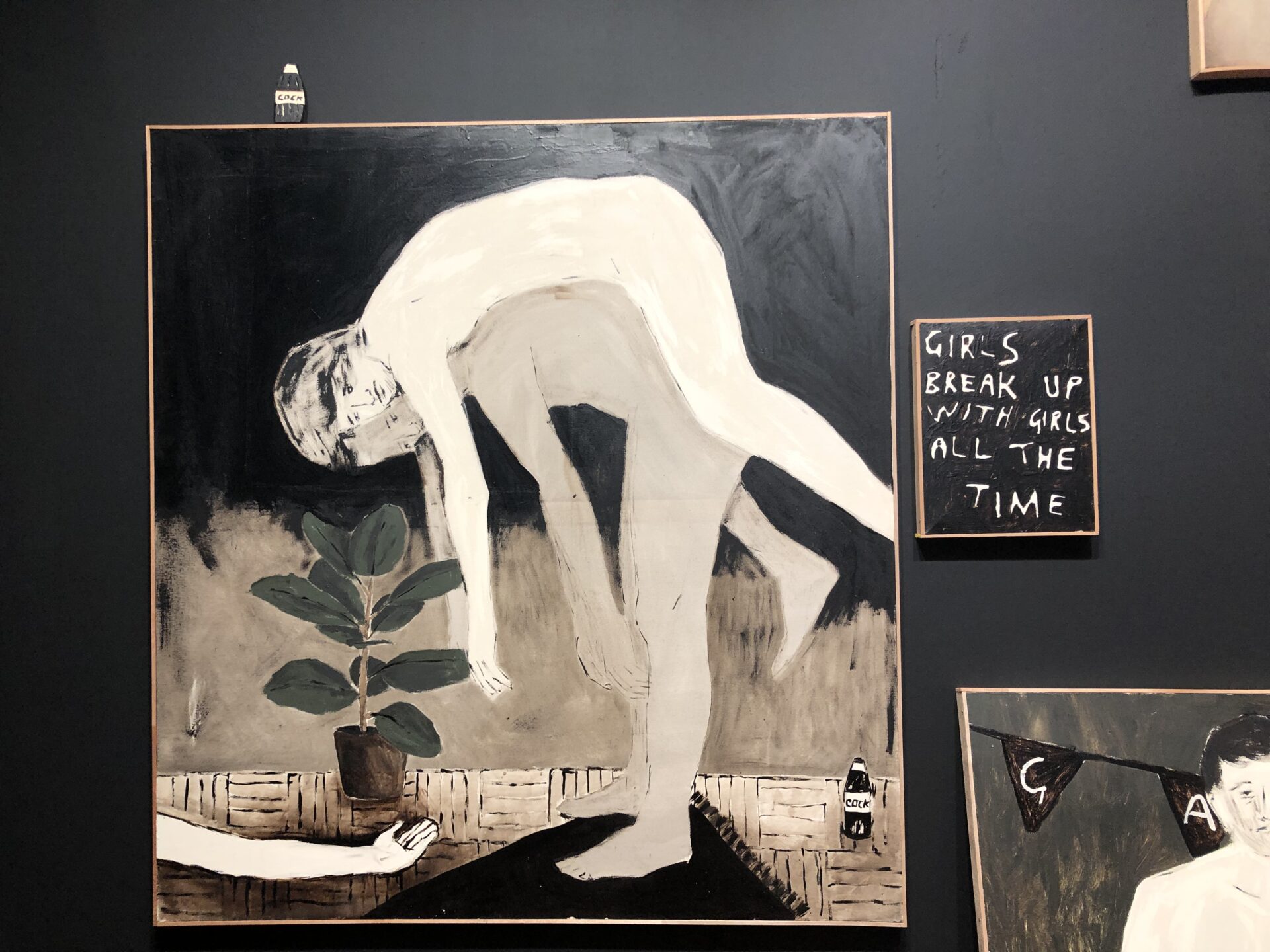”
Written byIndio Friedmann
“The use of text and language is critical for Seiler, with often poetic, religious and sediments functioning like a confessional” – Lucienne Bestall
The Investec Art Fair was an assortment of rich colours, African pride, critical social and historical commentary, art lovers and of course, all the others.
Amongst the bright colours, the loud reds and longing blues, a chromatic confessional seemed to have invited me right into Brett Seiler’s SOLO exhibition.
Described by Lucienne Bestall, “Seiler’s works read as confessions, or diary entries left exposed. Seiler too uses text in his work, single sentences with his characteristic honesty, sometimes sentimental, more often blunt. Missing lovers I have never met, says one work, I once jerked off to a portrait of Jesus, says another.”
Everard Gallery beautifully describes his work as “taking the forms of painting and installations. The use of text and language is critical for Seiler, with often poetic, religious and sediments functioning like a confessional. Dealing with ideas of romantic gestures and sexual interactions, Seiler’s works dives into historical gay modes of communication and conduct, bringing forward a collective memory of gay rights movements, and focusing on the sexual oppression of gay men. This results in feelings of longing, distance and nostalgia.”
Amongst the bright colours, the loud reds and longing blues, a chromatic confessional seemed to have invited me right into Brett Seiler’s SOLO exhibition.
Cape Town based but Zimbabwean born (*1994), Seiler graduated from the Ruth Prowse School of Art in 2015 and has exhibited at the likes of the Everard Gallery and Galerie Eigenart (both of which he is represented by), CIRCA Gallery, A4 Arts Foundation, Goodman Gallery, amongst others. This year Seiler’s works were one of the esteemed SOLO exhibitions at the Investec Art Fair. The SOLO exhibition caters for emerging and established artists globally and gives a “more in-depth view of varied artistic practices in a wide cross-section of contexts.” With this being a curated solo presentation, this year’s underlying meaning was to “explore how artists have reacted to intimacy and introspection caused by the pandemic and the effect of exchange and collaboration of artistic practice.” In this way, the artist can make critical statements about where we stand now. In chatting to Seiler about his SOLO exhibition he states that:
“It was really amazing to have a SOLO show this year, I am very grateful. I worked on this exhibition during covid, so I sat with these paintings with a lot of ideas. I think the paintings really strip down the walls and doors of apartments. Like scenes from my life, and in that I guess it show intimacy and vulnerability.” This comes at a time where we need vulnerability the most. Current global political tensions see a chauvinistic understanding of mankind. Where man is a microcosm, merely a world in miniature, in which he has represented all the elements of the universe as his own. Where masculine insecurity is masked behind unjustified anarchy. This toxicity has amassed the conception of man to be one of domination and invasion, rather than of unity and openness.
Where man is a microcosm, merely a world in miniature, in which he has represented all the elements of the universe as his own.
Seiler states that “The inspiration in my work mostly comes from my life, the work is very autobiographical. It’s about my friends and lovers from the past, and my boyfriend. With the text works too, I also love a play on words with the text, in a way it queers language for me.”
This is just one of the reasons I feel that Sieler gives a sense of purpose within his work. It is not just to be viewed but to be felt. To be moved towards a lasting sensitivity to humanity. To represent intimacy as it is, rather than what it “should” be. Without the gender typical vision of roles, without the assigned biases of sexuality. The paintings themselves have a personal intimate connection with you as the viewer and invite an open dialogue with your own sense of self. Making statements that are uncomfortable, relatable or hard to read, you really are forced to interpret their meanings in relation to your own context.
Everard: “Seiler’s paintings are often accompanied by performance-based works, process works and interventions. Works that ‘queer’ the gallery space, including writing and imagery created directly on the walls of the gallery – as a revolt or disobedience. Though currently based in Cape Town, being from Zimbabwe, Seiler’s work is also recognised for questioning gay rights in the African context, highlighting punishment, education, media and institutions.” Sieler’s text is blunt and powerful. I stood there for ages, daydreaming, brooding, confessing. Exposed as if a page of my own journal was hanging up for anyone to see. The painting read “Girls break up with girls all the time.” As art goes, my personal attachment to this was not in its literal sense but rather its visceral. I knew that personally, I felt those words. Sieler elaborates “Girls break up with girls all the time is a work referring back to an old work of mine (boys break up with boys all the time). A friend of mine broke up with her girlfriend so I thought it was a good time to make the work. I guess it almost normalises same-sex relationships. That we also experience heartbreak.”





